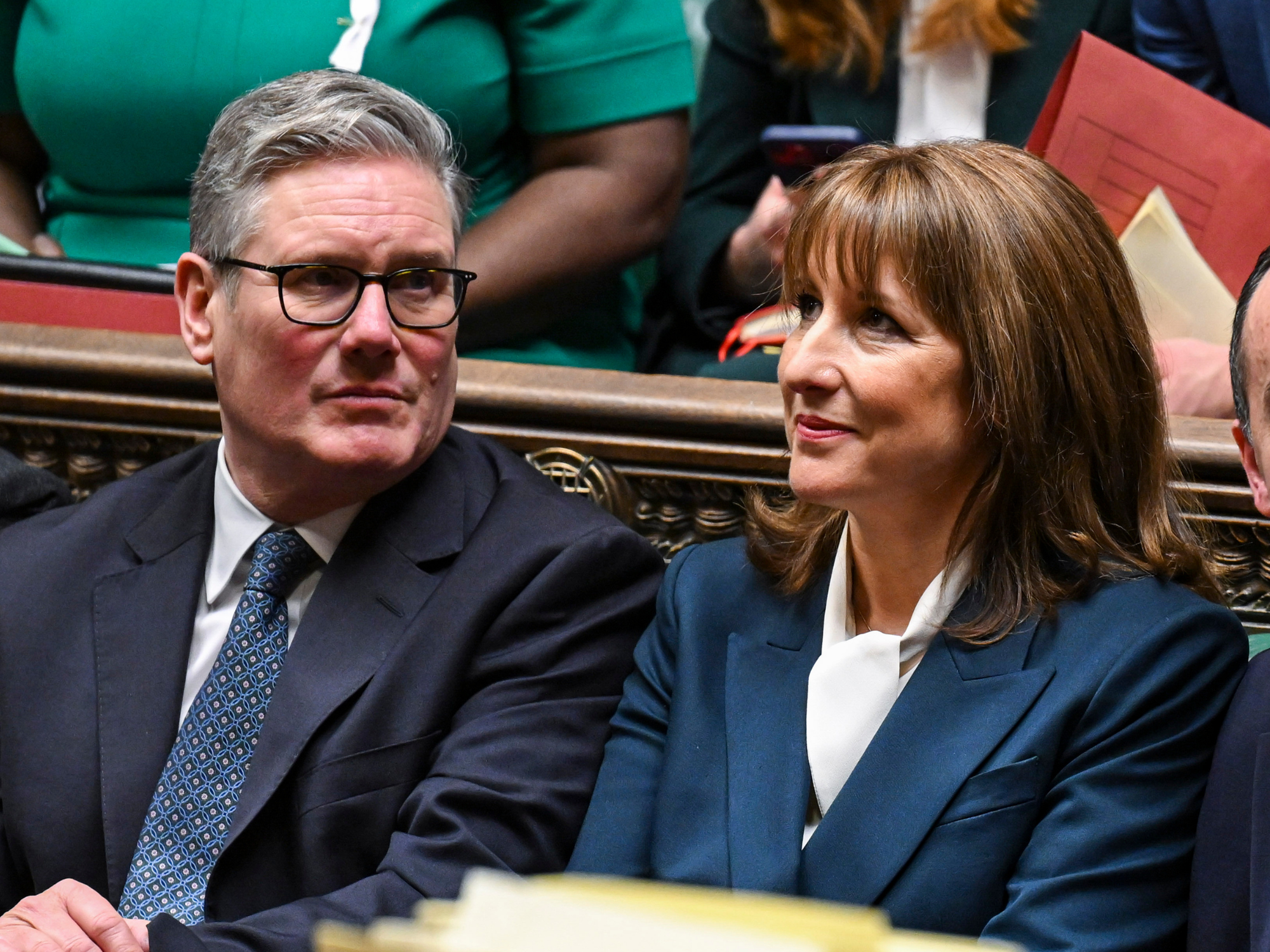Russian submarine in English Channel an 'explosion risk' as Nato monitors Vladimir Putin's vessel

British forces have handed over monitoring responsibilities to the Dutch navy
Don't Miss
Most Read
Trending on GB News
A Russian submarine navigating on the surface through British and European waters is experiencing severe technical difficulties, with Nato forces maintaining close surveillance of the vessel.
The diesel-electric submarine Novorossiysk, measuring 243 feet in length and belonging to Russia's Black Sea Fleet, is said to have suffered fuel seepage into its interior compartments, creating what sources describe as an "explosive hazard".
The Varshavyanka-class attack submarine, which has the capability to carry nuclear armaments, has attracted the attention of multiple Nato naval forces.
French, British, Belgian and Dutch vessels have been tracking the submarine's progress as it travelled past Brittany, through the English Channel and into North Sea waters.
Russian intelligence-linked sources first disclosed the vessel's difficulties while it was operating in the Mediterranean last month.
According to the Telegram channel VChK-OGPU, which maintains connections to intelligence circles, "fuel is leaking directly into the hold" of the submarine.
The situation aboard appears critical, with the channel's source stating: "There are no spare parts for repairs or qualified specialists on the submarine, and the crew is unable to fix the malfunctions."
Additional complications have emerged from the initial incident, with the source adding: "Other problems have begun to occur due to the serious accident. The fuel accumulated in the hold is an explosive hazard."

A French Navy frigate conducts surveillance of the Alliance’s maritime approaches, marking the presence of a Russian submarine operating on the surface off the coast of Brittany
|NATO MARITIME COMMAND
The source indicated that personnel aboard may need to begin "pumping out the hold" directly into the ocean as their only option.
Several Nato maritime forces have coordinated their surveillance efforts as the submarine progresses through European waters.
The French navy initially dispatched a frigate to track the Novorossiysk, while Belgium deployed the patrol vessel BNS Castor.
British forces subsequently handed over monitoring responsibilities to the Dutch navy, with the vessel Zr Ms Luymes taking the lead alongside an NH90 maritime combat helicopter and coastguard support.
LATEST DEVELOPMENTS

Vladimir Putin has been mocked by Nato over the submarine's progress
| REUTERSA Dutch defence ministry spokesman stated: "The Netherlands shows vigilance and prevents Russian ships from sabotaging undersea infrastructure."
American involvement has also been noted, with a US Navy patrol aircraft conducting multiple surveillance flights over the submarine near Gibraltar as it commenced its journey towards Russia.
The Novorossiysk continues to be accompanied by the Russian tugboat, Yakov Grebelskiy, throughout its transit.
Russia's Black Sea Fleet has responded to reports of the submarine's difficulties, issuing a denial of any "malfunction and emergency surfacing of the submarine Novorossiysk.
 The 242-foot Kilo-class submarine Novorossiysk belongs to Russia's Black Sea Fleet | GETTY
The 242-foot Kilo-class submarine Novorossiysk belongs to Russia's Black Sea Fleet | GETTYHowever, the statement did not explicitly address whether the vessel was experiencing technical difficulties.
Officials claimed the submarine was conducting a "scheduled inter-fleet transit" and noted that "according to international navigation rules, submarines pass through the Strait of Dover exclusively on the surface".
Nato Maritime Command has acknowledged monitoring the situation, issuing a brief statement declaring: "We are watching".
However, the defence bloc's first post did not make any reference to the reported technical issues.

Nato chief Mark Rutte added: 'Now, in effect, there is hardly any Russian naval presence in the Mediterranean left'
| REUTERSShortly after, Nato chief Mark Rutte added: "Now, in effect, there is hardly any Russian naval presence in the Mediterranean left.
"There's a lone and broken Russian submarine limping home from patrol.
"What a change from the 1984 Tom Clancy novel 'The Hunt for Red October'. Today, it seems more like the hunt for the nearest mechanic."
The submarine, with a displacement of 3,100 tonnes and capable of 45-day deployments using diesel generators and electric propulsion, is believed to be proceeding towards a Russian naval facility in the Baltic Sea.











